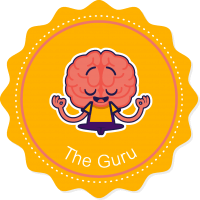In today’s rapidly evolving digital landscape, technology has become an integral part of education, offering innovative opportunities to enhance teaching and learning experiences. By integrating digital literacy and critical thinking skills into educational practices, educators can empower students to thrive in the digital age. Here, we explore the transformative potential of technology in education and its impact on fostering 21st-century skills.
1. Digital Literacy: Navigating the Digital World
Digital literacy is no longer an option but a necessity in the 21st century. By teaching students how to effectively navigate digital platforms, evaluate online information, and protect their digital identities, educators empower them to become responsible and informed digital citizens. From internet safety lessons to digital research skills, integrating digital literacy into the curriculum equips students with essential skills for success in an increasingly digital world.
2. Critical Thinking in the Digital Age
As the volume of information available online continues to grow, critical thinking skills are more important than ever. By teaching students how to analyze, evaluate, and synthesize information from various digital sources, educators foster critical thinking skills essential for discerning fact from fiction, identifying bias, and making informed decisions. From analyzing online articles to creating multimedia presentations, integrating critical thinking into digital learning experiences prepares students to navigate complexities and think critically in the digital age.
3. Interactive Learning Experiences
Technology offers limitless possibilities for creating interactive and engaging learning experiences. From virtual field trips to interactive simulations, educators can leverage technology to bring learning to life and make abstract concepts tangible. By incorporating multimedia resources, educational apps, and digital collaboration tools into lessons, educators cater to diverse learning styles and engage students in active learning experiences that promote deeper understanding and retention of content.
4. Personalized Learning Opportunities
Technology enables personalized learning experiences tailored to individual student needs and interests. Adaptive learning platforms, personalized learning apps, and online assessment tools allow educators to differentiate instruction, provide targeted interventions, and track student progress more effectively. By leveraging technology for personalized learning, educators empower students to take ownership of their learning, pursue their passions, and achieve their full potential.
5. Global Collaboration and Communication
Technology facilitates global collaboration and communication, breaking down geographical barriers and connecting students with peers around the world. Through digital platforms like video conferencing, online forums, and collaborative project tools, students can engage in cross-cultural exchange, collaborate on projects, and develop essential communication and teamwork skills. By fostering global awareness and cultural competence, technology enhances students’ perspectives and prepares them for success in a globally interconnected society.
Conclusion:
In conclusion, technology has the power to revolutionize education by empowering students with digital literacy and critical thinking skills essential for success in the 21st century. By integrating technology into educational practices, educators create dynamic learning environments that foster creativity, collaboration, and innovation. As technology continues to evolve, harnessing its potential for 21st-century learning is key to preparing students for the challenges and opportunities of the digital age.









